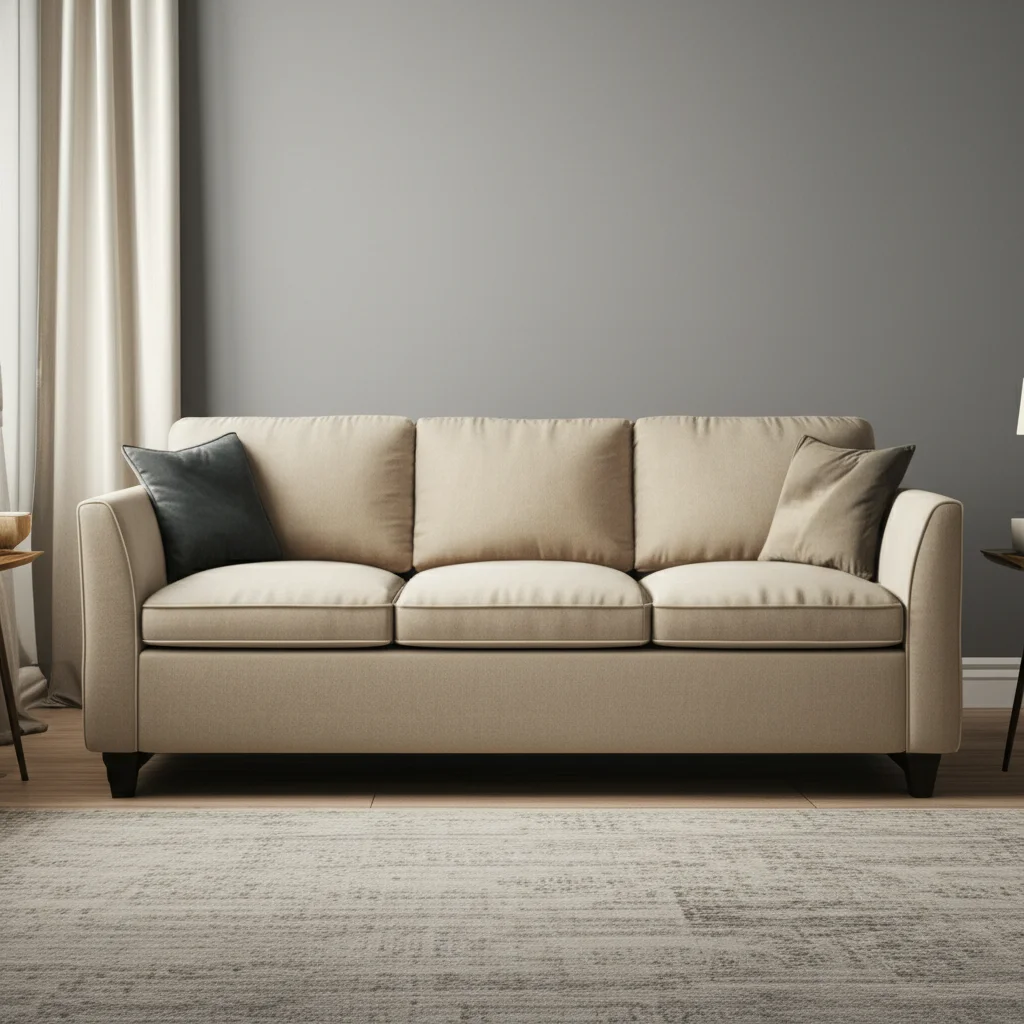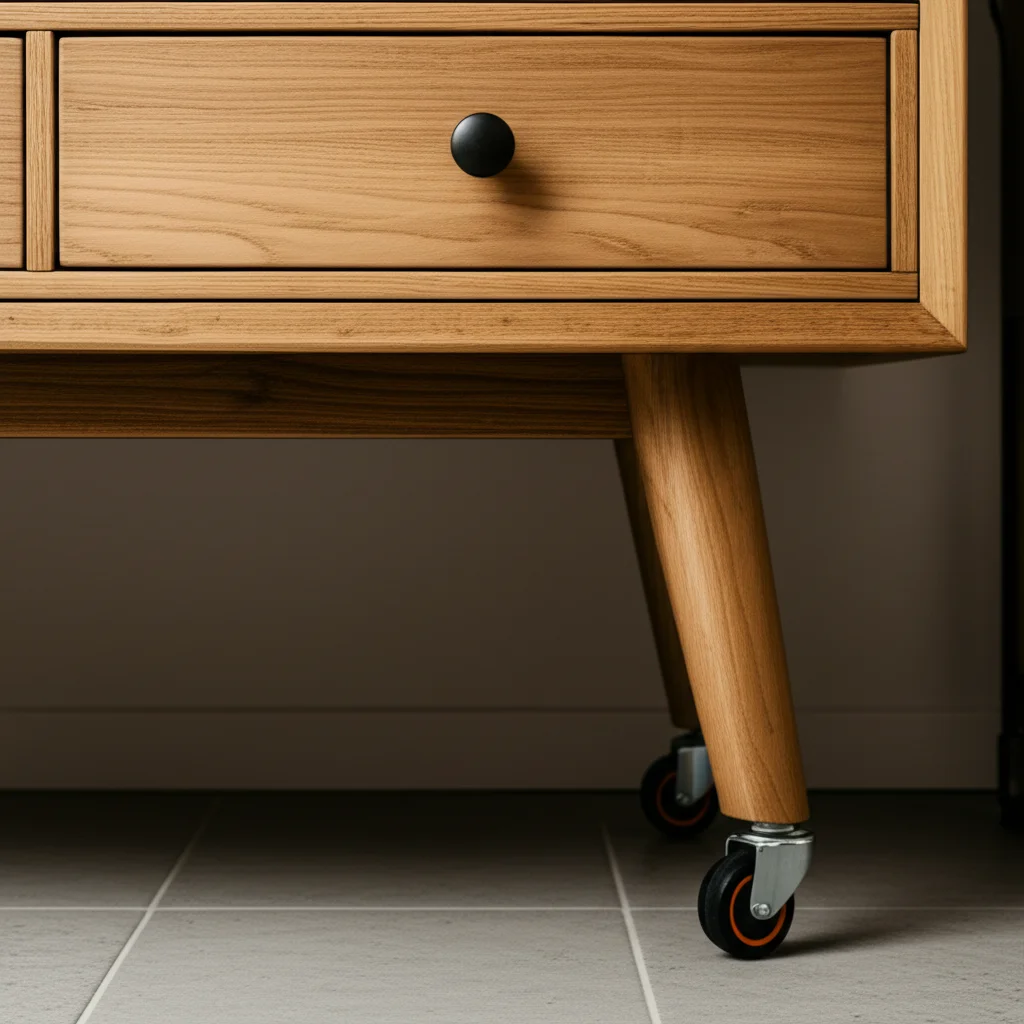· Todd Martin · Home Improvement · 14 min read
How To Break Down A Sofa

Mastering Sofa Disassembly: How To Break Down A Sofa
Have you ever faced the challenge of a sofa too big for a doorway? Or maybe you need to dispose of an old couch, but it just will not fit through the exit. Breaking down a sofa can seem like a daunting task. However, with the right approach, it becomes a manageable project. Learning how to break down a sofa saves you money on professional removal services. It also makes moving large furniture much simpler. This guide will walk you through every step, from gathering tools to responsible disposal. We will cover safety, different sofa types, and common challenges.
Takeaway: Your Sofa Disassembly Action Plan
- Prioritize Safety: Always wear protective gear and clear your workspace before beginning.
- Gather Essential Tools: Have screwdrivers, wrenches, utility knives, and pliers ready.
- Understand Your Sofa’s Structure: Identify how your specific sofa is constructed before deconstruction.
- Disassemble Systematically: Remove parts in a logical order: cushions, legs, arms, back, then frame.
- Plan for Disposal: Know where to take disassembled materials for recycling or trash pickup.
How do you break down a sofa?
You break down a sofa by systematically disassembling its components. First, remove cushions and detachable parts like legs. Next, carefully detach the arms, backrest, and any other upholstered sections. Finally, break down the main frame using appropriate tools, separating wood, metal, and fabric for easier transport or disposal. This process requires patience and the right tools.
Why Disassemble Your Sofa? Understanding the Need
Many people face situations where breaking down a sofa becomes necessary. Perhaps you are moving into a new home with tight stairwells. Maybe you are simply replacing an old couch, and the old one needs to leave. Disassembly offers practical solutions for these common problems. It helps you navigate difficult spaces without damaging walls or the sofa itself.
Breaking down a large piece of furniture also offers significant benefits. You can save money that you might otherwise spend on specialized moving companies. These companies often charge extra for difficult furniture removal. Disassembly also makes environmental sense. You can often separate materials like wood, metal, and fabric for recycling. This reduces landfill waste. Furthermore, a smaller, broken-down sofa is much easier to transport. You might even fit it into a standard vehicle instead of needing a large truck. This makes the entire process more efficient and less stressful. Understanding these reasons helps you prepare for the task ahead.
Essential Tools and Safety First for Sofa Deconstruction
Starting any furniture project requires the correct tools and a strong focus on safety. Breaking down a sofa involves various materials. You might encounter wood, metal, fabric, and foam. Having the right tools makes the job easier and safer. A basic set of screwdrivers is essential. Both Phillips-head and flat-head will be useful. Wrenches are also crucial for bolts, especially on modern or modular sofas.
A sturdy utility knife is invaluable for cutting fabric and webbing. Pliers can help with staples and small fasteners. For more stubborn screws or larger parts, a power drill with appropriate bits can save a lot of time and effort. Beyond tools, personal safety must always come first. Wear heavy-duty work gloves to protect your hands from splinters, sharp edges, and staples. Safety glasses are also a must. They shield your eyes from flying debris. Ensure your workspace is clear of clutter. This prevents trips and falls. Proper lighting also helps you see what you are doing clearly. I always make sure my area is clean before I start. This prevents any accidents.
Preparing Your Sofa for Breaking Down: Initial Steps
Before you even touch a tool, proper preparation is key. This initial phase makes the entire sofa disassembly process smoother. First, clear the area around your sofa completely. You need ample space to work safely and to lay out disassembled parts. Remove any nearby furniture or obstacles. This prevents accidental damage to your home or yourself.
Next, remove all cushions from the sofa. This includes seat cushions, back cushions, and any throw pillows. These items are often bulky and can get in the way. Once the cushions are gone, inspect your sofa’s structure. Look for any visible screws, bolts, or clips. Sofas vary greatly in their construction. Some have easily removable legs or backrests. Others might have hidden fasteners. Taking a few minutes to understand how your specific sofa is put together will save you frustration later. Consider taking photos or videos as you remove parts. This visual record can be incredibly helpful if you ever need to reassemble it. It also serves as a guide for understanding complex connections. For example, if you wanted to cover sofa with sofa cover, understanding its structure helps. Knowing where seams and connections are makes a big difference. Similarly, if you plan to clean your sofa before breaking it down, knowing its fabric type is important. You can find useful tips on how to clean your sofa or even specifically how to clean a leather sofa if applicable. Identifying parts correctly allows for more efficient work.
Step-by-Step Guide to Breaking Down a Standard Sofa
Breaking down a standard sofa involves a systematic approach. This ensures you do not miss any hidden fasteners. Start by turning the sofa on its side or back, if possible. This gives you better access to the underside.
- Remove Legs and Feet: Many sofas have legs that screw directly into the frame. Unscrew these by hand or with a wrench. Some might be bolted on, requiring a socket wrench. Keep all screws and bolts together in a small bag.
- Detach Upholstery and Fabric: Look for the fabric stapled to the bottom or back of the frame. Use your utility knife to carefully cut the fabric. Cut along the edges to expose the internal frame. You can also use pliers to remove staples, but this is more time-consuming. Peeling back the fabric reveals the wood or metal frame. This step is crucial for accessing internal connections. Understanding the upholstery helps. If you ever wanted to reupholster an antique sofa, this knowledge is very useful.
- Remove Arms and Backrest: These components are usually bolted or screwed to the main frame. Look for large bolts or screws connecting the arms to the base. You might need to cut more fabric to find them. Use your wrench or screwdriver to loosen and remove these fasteners. The backrest is often attached similarly. Some sofas have interlocking brackets that slide together. A rubber mallet can help separate these if they are tight.
- Disassemble the Frame: Once the arms and back are off, you are left with the main frame. This is often the bulkiest part. Look for screws, bolts, or wood glue joints connecting different frame sections. For wood frames, a power drill can quickly remove screws. For metal frames, some sections might be bolted together. Others might be welded, meaning they cannot be easily separated without specialized tools. If the frame is too large to move, you might need to cut it into smaller pieces. A reciprocating saw with a wood or metal blade works well for this. Always be careful of springs or metal coils inside. If your sofa has a squeak, understanding its frame helps fix it. Knowing how to fix a squeaky sofa involves examining frame integrity. Be methodical with each cut or unscrew.
Tackling Tricky Sofa Features: Recliners and Sectionals
Not all sofas are simple, fixed structures. Recliners and sectionals present unique challenges during disassembly. These types of furniture often have more complex mechanisms and connecting systems. Breaking them down requires a bit more thought and caution.
Disassembling a Recliner Sofa
Recliner sofas contain intricate metal mechanisms. These mechanisms allow the sofa to recline. Always start by removing any removable cushions. Next, turn the recliner over carefully. You will see the metal reclining mechanism underneath. These mechanisms often attach to the sofa frame with bolts. Use a wrench or socket set to loosen and remove these bolts. Be aware that springs are part of this mechanism. Springs can release suddenly. Exercise extreme caution. Once the mechanism is detached, the remaining frame can be broken down like a standard sofa. Some recliners might have a separate back that unlatches. Look for levers or pins that release the backrest from the seat base. It often slides up and off after releasing a lock.
Breaking Down a Sectional Sofa
Sectional sofas are made of multiple individual pieces. These pieces connect together to form one large unit. The key to breaking down a sectional is finding the connecting brackets. These brackets are usually located on the sides or underside of each section. They might be metal clips, hooks, or bolts that slide into place.
- Locate Connection Points: Feel along the sides where two sectional pieces meet. You will typically find metal brackets or clamps.
- Separate Sections: For bolted connections, unscrew the bolts. For clips or hooks, you might need to lift one section slightly while pulling it away from the other. Some modern sectionals have simple interlocking mechanisms that slide apart.
- Disassemble Each Piece: Once separated, each sectional piece can often be broken down further. Treat each individual piece like a smaller, standard sofa. Remove cushions, legs, and then detach arms or backrests if they are designed to be removed. Understanding how a sectional measures helps too. Knowing how to measure for a sectional sofa gives insight into how its parts join. This prior knowledge can guide your disassembly efforts. If you are also considering how to arrange the pieces, knowing how to arrange l-shaped sofa in living room can offer perspective on their modularity.
Remember to keep track of all fasteners and brackets from each section. This is especially important if you plan to reassemble part of the sectional later.
Managing Materials: Storage, Disposal, and Recycling
After successfully breaking down your sofa, you are left with various materials. Deciding what to do with these materials is the next important step. Proper management ensures safety and environmental responsibility. Your goal is to simplify moving or disposal.
First, organize the disassembled parts. If you plan to store the sofa for future use or reassembly, label each piece. Put all fasteners (screws, bolts, clips) into clearly marked bags. This keeps everything together and makes reassembly much easier. You might want to wrap larger pieces for protection. If you are storing the sofa long-term, consider how to wrap sofa for storage to protect it from dust and pests.
For disposal, consider separating materials. Most sofas contain wood, metal, fabric, and foam.
- Wood: Wooden frame pieces can often be recycled. Check with your local recycling center. Some lumberyards or construction debris centers accept clean wood.
- Metal: Metal components like springs, bolts, or recliner mechanisms are valuable scrap metal. Many recycling facilities accept metal.
- Fabric and Foam: Upholstery fabric and foam padding are usually the hardest to recycle. They often end up in landfills. However, some specialized textile recycling programs exist. Check with local charities or fabric recyclers.
Alternatively, you can schedule a bulk trash pickup with your local waste management service. They often have specific days for large item collection. Confirm their requirements for disassembled furniture. Some services require items to be bundled or placed in specific containers. If you are looking for general advice on getting rid of an old couch, learning how to dispose of a sofa can provide more detailed options. This ensures you follow local regulations and dispose of the materials responsibly.
Common Challenges and Troubleshooting Sofa Disassembly
While breaking down a sofa is a practical skill, you might encounter some common challenges. These issues can slow down the process. However, most problems have simple solutions. Knowing what to expect helps you overcome them quickly.
One frequent issue is stuck screws or bolts. Over time, rust or grime can seize fasteners. Apply a penetrating oil to the stuck parts. Let it sit for a few minutes. This can loosen the rust. Use a firm, steady pressure when turning the tool. If the screw head is stripped, try a screw extractor or a pair of locking pliers. Sometimes, hidden fasteners are the problem. Modern sofas often have clever designs. They conceal screws or clips under fabric or in tight spaces. Feel along seams and edges. Use a flashlight to peek into crevices. You might need to cut a small section of fabric to reveal them. Be careful not to cut too much.
Heavy components can also pose a challenge. Sofa frames, especially, can be surprisingly heavy. Never try to lift or move heavy parts alone. Ask for help if possible. Use furniture dollies or moving straps for larger sections. This prevents injury to your back. If the frame is too bulky, you might need to cut it into smaller, more manageable pieces. A reciprocating saw works well for this.
Finally, unexpected materials can appear. Some older sofas might contain horsehair stuffing or extremely dense foam. These materials can be dusty or difficult to cut. Wear a mask if you encounter excessive dust. For very dense foam, a serrated utility knife or an electric carving knife can be effective. If you find the disassembly process overwhelming, or if you encounter components that seem impossible to break down, it might be time to consider professional help. A junk removal service can often handle difficult items. They have the right tools and expertise. Remember, safety is always the top priority. Do not force anything that feels unsafe.
Frequently Asked Questions
Is it hard to break down a sofa?
Breaking down a sofa is a manageable DIY project. It requires patience and basic tools. The difficulty depends on the sofa’s construction. Some sofas have simple, visible fasteners. Others may have complex mechanisms or hidden screws. Preparing well and understanding the steps make the process much easier.
What tools do I need to break down a couch?
You typically need a few basic tools. A screwdriver set (Phillips and flathead), a wrench or socket set, and a utility knife are essential. Pliers are useful for staples. For tougher jobs, a power drill or even a reciprocating saw may be necessary. Always include safety glasses and work gloves.
Can all sofas be broken down?
Most sofas can be broken down to some extent. However, the ease and completeness of disassembly vary. Sofas with simple wooden frames are generally easy. Recliners and sectionals have more complex metal mechanisms or interlocking parts, which require careful handling. Fully welded metal frames cannot be broken down without specialized cutting tools.
How do you dispose of a sofa after breaking it down?
After breaking down a sofa, separate the materials. Wood and metal parts are often recyclable at local facilities. Fabric and foam usually go into general waste. Check with your local waste management service for bulk trash pickup rules. They might require specific bundling or collection days for large items. For more detailed disposal options, check out our guide on how to dispose of a sofa.
How long does it take to disassemble a sofa?
The time it takes to disassemble a sofa varies greatly. A simple, small sofa might take 1-2 hours. A large, complex sectional or recliner could take 3-5 hours or more. Factors like the number of fasteners, type of materials, and your experience level influence the duration. Having the right tools also speeds up the process.
Can I put a broken-down sofa in a normal trash bin?
Generally, no. Even when broken down, sofa components are often too bulky for standard household trash bins. They also exceed weight limits. Most municipal waste services require large items to be placed out for special bulk collection. You might also need to transport parts to a local transfer station or recycling center.
Conclusion
Learning how to break down a sofa empowers you to handle large furniture with confidence. This skill offers numerous benefits. It simplifies moving, helps with disposal, and saves you money. We have walked through the process. We started with preparing your workspace. We then moved to gathering the right tools. We also covered the step-by-step method for various sofa types. Disassembly involves careful attention to safety. It also requires understanding the different materials.
Remember to prioritize personal protection. Always wear gloves and safety glasses. Take your time with each step. Do not rush. Finally, plan for the responsible disposal of your sofa’s components. Recycling wood and metal reduces waste. Breaking down a sofa is a practical and rewarding project. It helps you manage your home and belongings more efficiently. Go ahead and tackle that large sofa. You now have the knowledge and steps to succeed.





